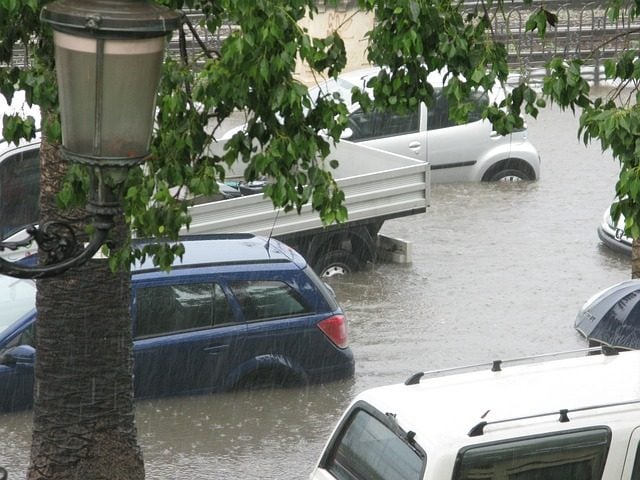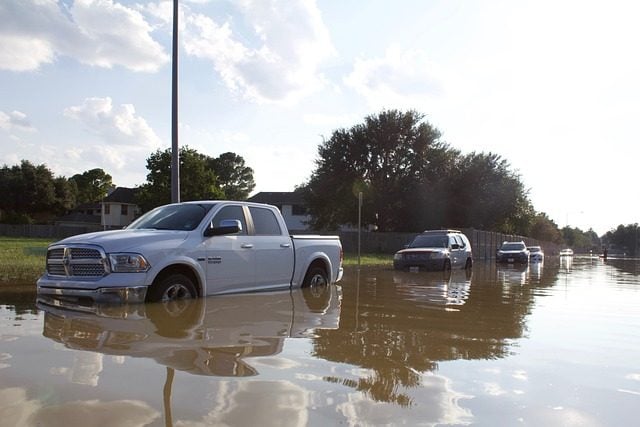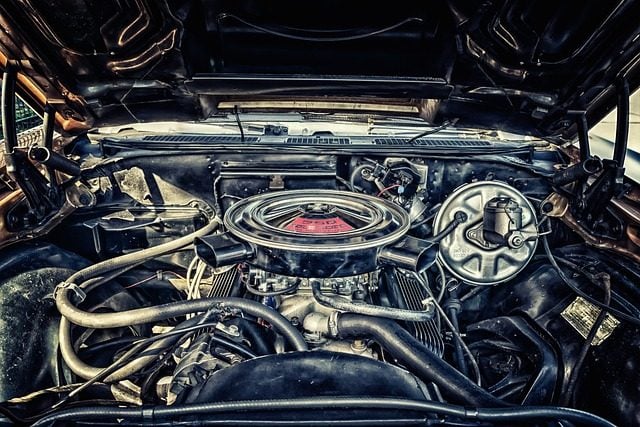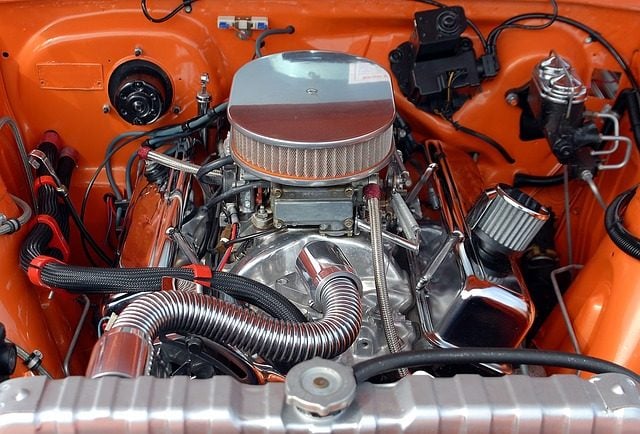BLOGS
Flooded Car? Check for These 10 Common Problems
A flooded car can cause serious damage to the engine and other components. Learn what to do if your car gets flooded here.
Natural disasters, such as floods, can have a catastrophic impact on communities, causing substantial damage to both infrastructure and personal properties. One of the most frequently affected assets during these devastating events is personal vehicles. Cars that have been subjected to floodwaters can present a multitude of potential problems that car owners need to be aware of. These can range from minor inconveniences to significant safety risks that could endanger the lives of occupants. This is why it’s important to have car insurance or auto insurance in case you get flood damaged cars. This comprehensive guide aims to provide an in-depth understanding of the crucial steps you need to take for a flooded car.
1. Evaluating the Condition of the Oil
The initial step after discovering flooded cars is to conduct a meticulous examination of the oil. The engine, which is the heart of your vehicle, relies heavily on the oil for its operation. The oil serves as a lubricant, reducing friction between moving parts and preventing overheating. However, a flood engine can cause contamination of the oil, resulting in a light-colored, milky substance. This mixture of water and oil can cause extensive damage to the engine’s internal components.
When water mixes with oil, it forms an emulsion, a thick substance that doesn’t lubricate the engine parts. This can lead to increased friction and potentially cause the engine to seize. If you notice any alteration in the color or texture of the oil indicative of water contamination, it’s crucial to have the oil changed immediately. An oil change after exposure to floodwater is not just a regular maintenance task. It’s a vital procedure that can help prevent further deterioration of the engine components and save you from costly repairs.

2. Detailed Inspection of the Interior
The interior of a car is designed for comfort and functionality. However, the intrusion of floodwater inside the car can cause severe damage to the interior. Floodwater is often contaminated with dirt, bacteria, and other pollutants that can stain and ruin the upholstery. Moreover, when the interior remains damp for a long time, it can lead to the growth of mold and mildew. Mold and mildew are unpleasant to smell and hazardous to health, causing allergic reactions and respiratory issues.
It’s absolutely vital to clean and thoroughly dry the interior at the earliest opportunity to mitigate these issues. Remove all the removable parts like floor mats, seat covers, and even seats, if possible, and let them dry under the sun. Use a wet vacuum to remove moisture from the carpets and upholstery. Pay special attention to hidden recesses where moisture might accumulate. These areas are often overlooked but can harbor mold and mildew if not properly cleaned and dried. Additionally, consider using mold and mildew removers available in the market to ensure a thorough cleanup. Also, use air fresheners to get rid of any unpleasant smells.
3. Testing the Integrity of the Electrical System
Modern cars rely heavily on electronics for various functions. From controlling the engine and transmission to operating the entertainment system, electronics play a vital role in your vehicle’s operations. However, floodwater can significantly disrupt the car’s electrical system, leading to malfunctions in various electronic functions. Water can corrode the wires, damage the fuses, and short-circuit the controls, causing a range of problems.
Testing all lights, power windows, radio, air conditioning, and other electronic controls is critical for any abnormalities. Check the function of the windshield wipers, turn signals, brake lights, and other essential features. Also, pay attention to the performance of the infotainment system, GPS system, and rear-view camera if your car has them. If anything seems out of order, it’s recommended to consult a professional mechanic. Electrical malfunctions can lead to potential electrical fires or failures while driving, posing a serious safety risk. Therefore, it’s necessary to have any electrical issues addressed promptly by a professional.
4. Close Examination of the Air Filter
The air filter in your vehicle plays a crucial role in maintaining the health of the engine. It filters out dust, dirt, and other particles from the air before it enters the engine, preventing these contaminants from causing wear and tear to the engine parts. However, when exposed to floodwater, the air filter can become waterlogged and lose its ability to filter effectively.
A damp air filter is a clear sign that water has entered the engine. This can potentially lead to serious engine damage, as unfiltered air-carrying contaminants can enter the engine. Be sure to replace a waterlogged air filter promptly to ensure the health and functionality of your engine. A new, dry air filter will restore the engine’s air supply to its optimal condition, ensuring efficient combustion and performance.

5. Vigilance for Signs of Rust and Corrosion
Floodwater, especially saltwater, can expedite the rusting process and corrosion on the car’s metal parts. Saltwater is particularly damaging because salt accelerates the chemical reaction that causes rust. This can weaken the metal parts of your car and lead to structural and mechanical issues over time.
Conduct a detailed examination of your car’s undercarriage, brake lines, fuel tank, and other metal components for any signs of oxidation. Pay particular attention to the underside of your car, which is often overlooked during regular cleaning. Early detection and remediation of rust and corrosion can help extend the lifespan of these parts. If any part is severely corroded, consider replacing it to avoid future mechanical failures.
6. Checking the State of the Transmission Fluid
The transmission is one of the most complex and crucial systems in your vehicle. It ensures that the right amount of power goes to your wheels to drive at a given speed. The transmission fluid is both a lubricant and a coolant for the transmission parts. Like engine oil, transmission fluid can also become contaminated with water when exposed to floodwater.
Contaminated fluid often appears frothy or adopts a light pink hue due to the water mixture. This can significantly affect the performance of the transmission system, leading to erratic shifting, overheating, and even complete failure. If you notice such changes in your transmission fluid, it’s advisable to seek professional assistance to drain and replace the fluid promptly. Doing so can maintain your transmission’s optimal performance and prevent costly repairs.
7. Detailed Scrutiny of the Fuel System
Your vehicle’s fuel system plays a critical role in delivering fuel from the tank to the engine. It consists of the fuel tank, pump, filter, and injectors or carburetor, all of which can be affected by floodwater. Water contamination in the fuel system can result in subpar performance or even prevent the car from starting altogether.
If you suspect water contamination in your fuel system, it’s advisable to have a professional mechanic inspect the system and perform necessary repairs. Water in the fuel can cause the engine to run rough, stall, or not start at all. It can also damage the fuel pump and injectors, leading to expensive repairs. Therefore, addressing this issue promptly is crucial to prevent further damage.

8. Checking for Debris
Floodwaters often carry along debris that can get lodged in various parts of the car. This can include leaves, mud, sticks, garbage, and even larger objects that can cause significant damage. Debris can block important passages, interfere with moving parts, and even cause physical damage to your car.
Conduct a comprehensive check for debris stuck in areas like the radiator, behind the wheels, beneath the car, or in the engine compartment. Check the air inlets and outlets, as they are common places for debris to accumulate. Removing obstructions caused by debris can prevent additional mechanical issues from arising and ensure that your vehicle operates smoothly.
9. Brake System Test
The braking system is one of your vehicle’s most crucial safety features. It allows you to slow down or stop your vehicle, thereby preventing accidents. However, brake fluid can potentially impact a car’s braking system, reducing its effectiveness and posing a safety risk.
After a flood, it’s important to test your brakes in a safe location to ensure they’re functioning as they should. Check for any changes in brake pedal feel, unusual sounds when braking, or decreased braking performance. If you notice any irregularities, have them inspected by a professional immediately. Proper maintenance and prompt braking system repairs are essential to ensuring your safety on the road.

10. Exhaust System Inspection
Your vehicle’s exhaust system plays a key role in directing exhaust gases out of the engine, reducing emissions, and minimizing noise. However, water can infiltrate the exhaust system during a flood, causing rust, leading to holes and leaks. This can compromise the performance of your exhaust system and lead to increased emissions and noise.
Pay close attention to any unusual sounds when starting your car and while driving. If you suspect any issues with your exhaust system, have a mechanic inspect it promptly. Regular inspections and maintenance of your exhaust system can help detect issues early and keep it in good working condition, enhancing your vehicle’s performance and ensuring it meets emission standards.
Final Thoughts
Flood damage can be incredibly stressful, and dealing with a flood-damaged car further adds to the burden. However, having a deep understanding of the potential problems and knowing how to tackle them can help you regain control of the situation.
Safety should always be your utmost priority. If you’re uncertain about any aspect of your vehicle’s condition after a flood, don’t hesitate to seek the help of a professional mechanic and invest in an insurance company for your flooded vehicle. It’s always better to exercise caution when dealing with flood-damaged vehicles to ensure your safety and the longevity of your vehicle. You should have your car towed by a professional if you’ve exhausted all the things in this sure to get your car back to its original state.
Suggested Read: How Much Drinking Water You Need Based On Your Lifestyle
Suggested Read: Importance Of Proper Air Ventilation To Your Luxury Home
Suggested Read: Fuel Surcharges and How They Affect Plane Fare
Suggested Read: Why Forresta Has The Best Green Spaces
Suggested Read: Flood Proof Areas in the Philippines
















